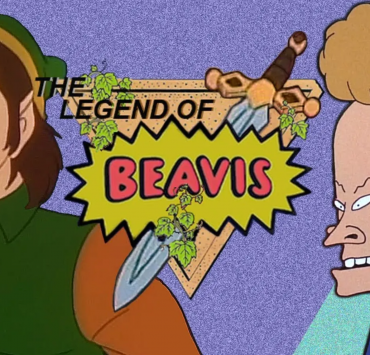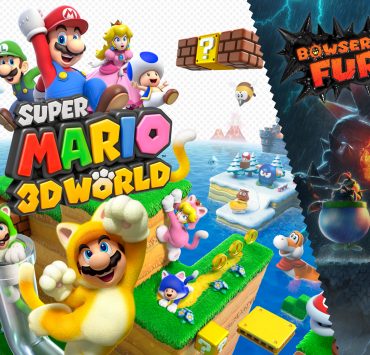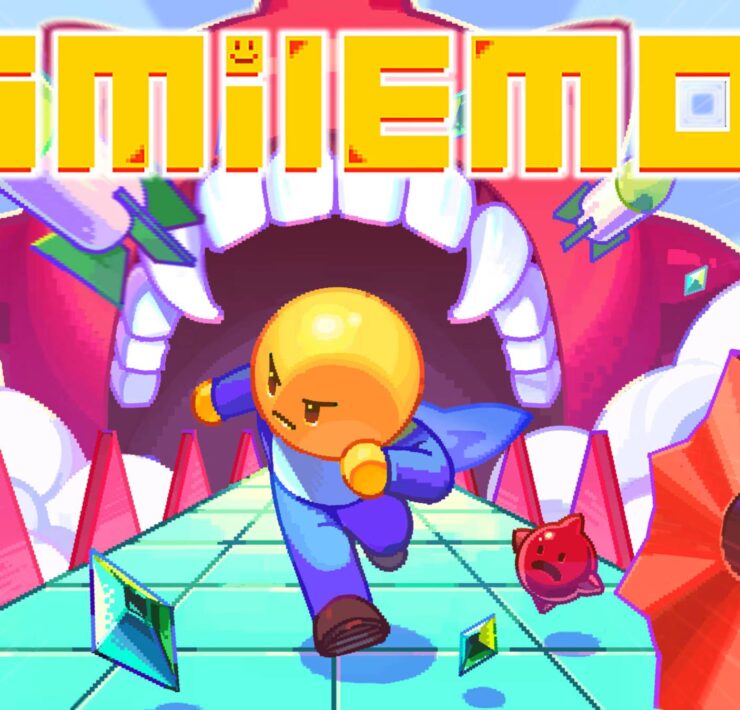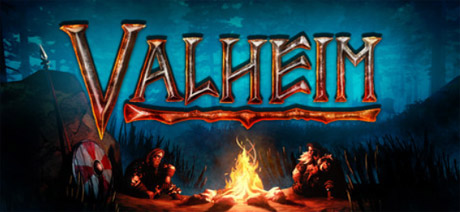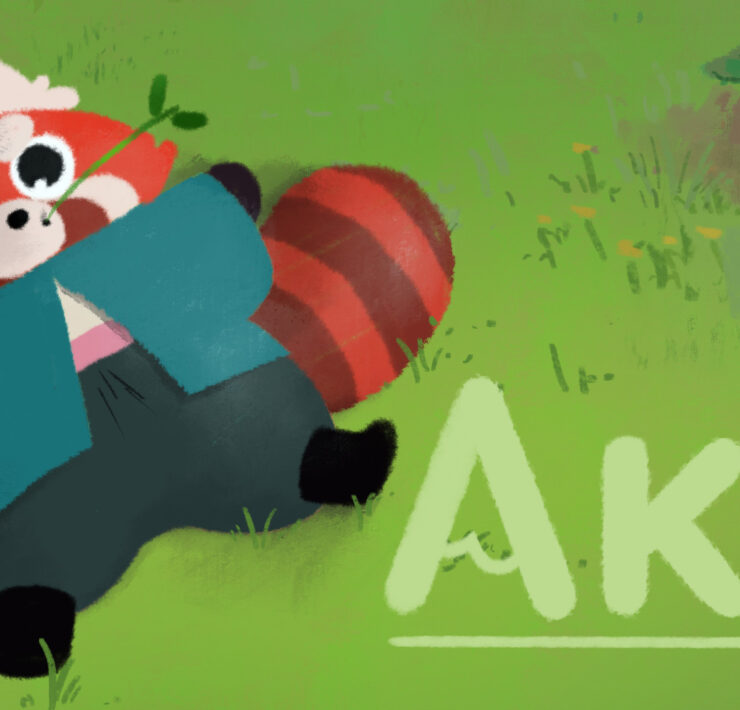Save Koch Review – Who Has Betrayed the Boss?
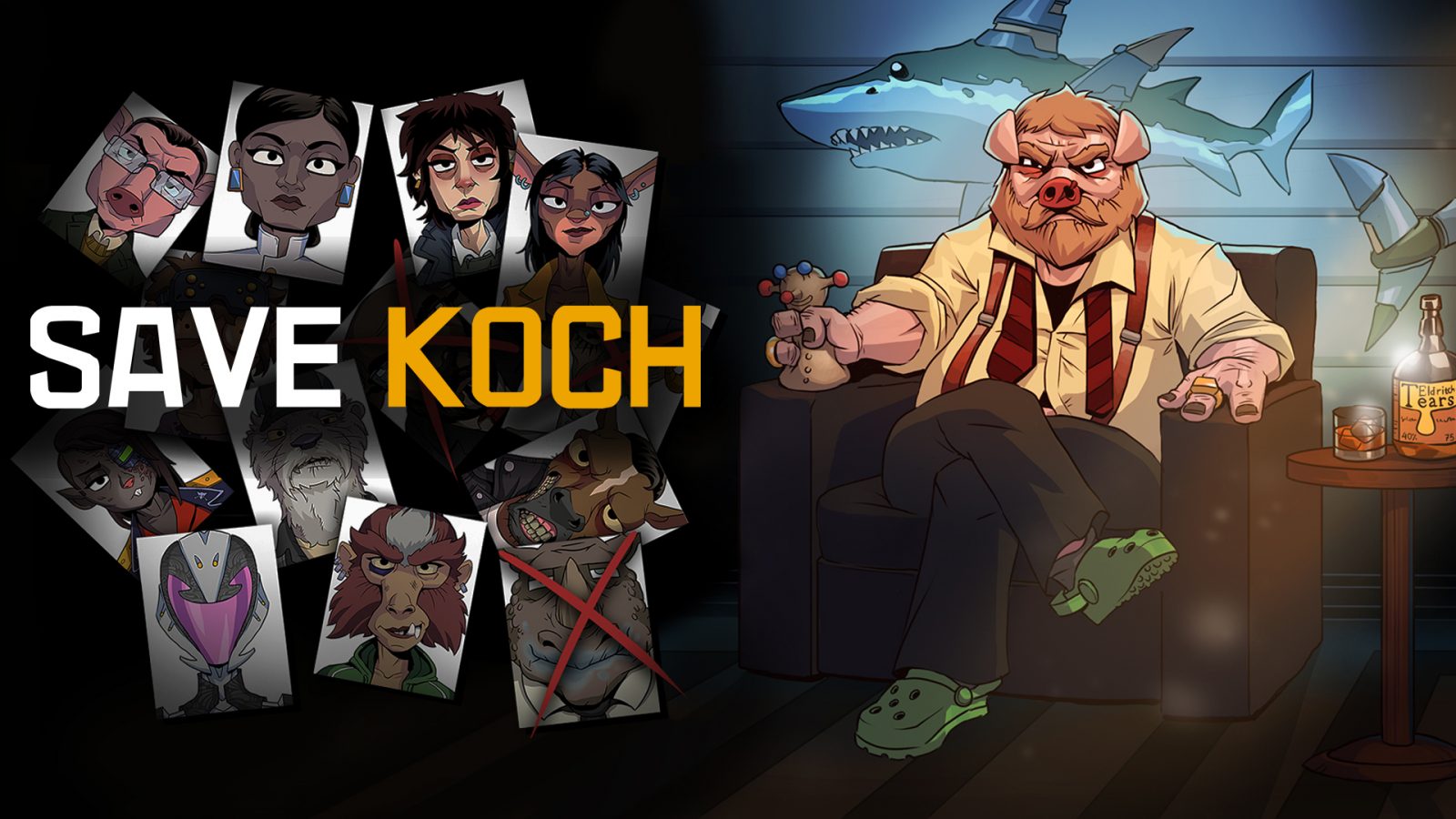
Save Koch is a complex game of myriad narrative threads, bare-bones mechanics that work together intelligently, and some beautiful comic book visuals. It puts you in the role of a mafia boss trapped behind a desk and in control of a city full of minions, with the goal of ratting out a mole and a mastermind, all while keeping yourself alive and your city at peace. It offers a detailed story full of eccentric oddball characters and a constantly shifting narrative that adds real stress and tension.
Like the earliest RPGs of the 80s and early 90s, Save Koch gives players very little information from the get-go. When you first turn the game on, you’re shown a trailer that doubles as an intro cutscene. It’s the only part of the game that’s voice-acted, and it tells you a little about who you’ll be controlling while visual snippets of the gameplay flash up on-screen. After hitting ‘New Game’ you get a stylized intro cutscene in a comic book theme, reminiscent of the first inFamous and the recap loading screens in The Witcher 3. This cutscene shows you, Jeffrey Koch, taken from your home by your minions and dumped in a secure safehouse. And that’s it.
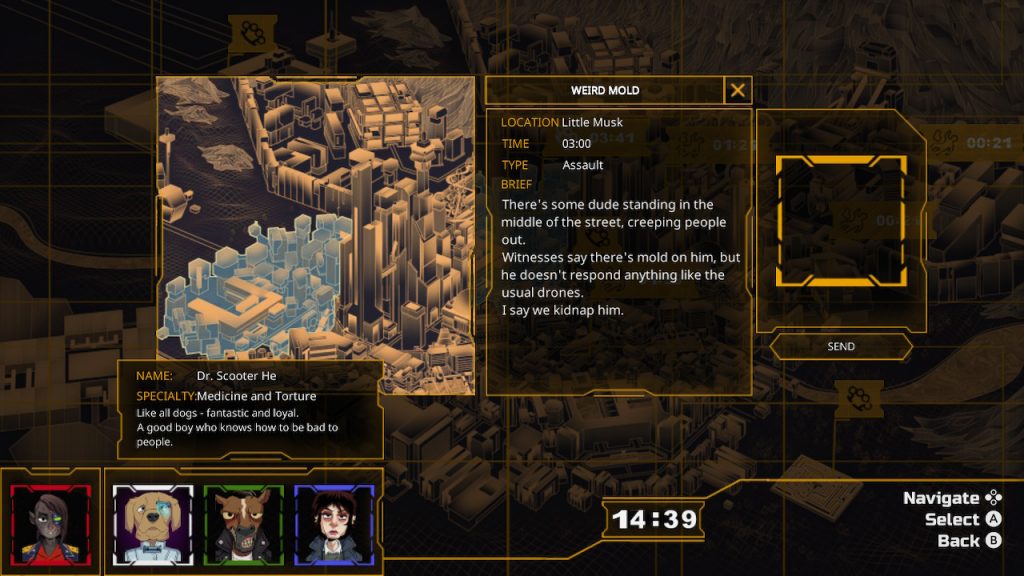
Everything else must be learned by doing, but the long-and-short of it is that you, Jeffrey Koch, are a local crime lord. Someone is gunning for you and you have been given seven days to figure out who the mole in your operation is, and who the plot’s mastermind is. You have to get to know the game’s trippy and bizarre world, its eclectic cast of bonkers characters, and your own backstory, relationships, and job on the fly, all while trying to save your own bacon (because you’re a pig).
Save Koch does not hold your hand, and there is a surprising amount of depth to the game’s lore, story, and the interwoven threads that connect its characters and events. The game is short. Everything moves forward in real time and lasts approximately 90 minutes (or seven in-game days).
You won’t learn everything on your first playthrough. In fact, you might spend the entire time deeply frustrated. You’ll be wondering who anyone is and why you should care. You might fail at the end and not know how it even happened. On your second playthrough, however, things start to click. Lines get drawn between yourself and the other characters. The map is now familiar; it’s a playground rather than a labyrinth. Characters deepen in personality and dimension.
The story of Save Koch is a complex web that’s tied to every little piece of the gameplay and every move you make. Save Koch is all about moves and countermoves, and it really is a game that responds to your every choice. No two playthroughs are the same, and you’ll start to see your next run branch off in a different direction from the old one within five minutes of starting.

The problem with the story is that nothing is set up for you. On the one hand, this is refreshing. You’re dropped into the world and left to figure things out for yourself. That approach might have been good in a different world and with a different kind of story. As it is here, the gameplay and story hinge on you immediately being familiar with your web of characters, invested in Koch, and committed to the story going forward. This, however, is impossible on your first run, and still difficult on your second.
Save Koch feels like it’s a tie-in to something else. In fact, during my first run I paused to google whether or not this game was tied to a long-running comic book (like how The Wolf Among Us is tied to Fables). But it isn’t; this is all we have. And yet it feels like we are supposed to be already familiar with an enormous world full of uniquely designed and intricate characters.
These characters fall into groups connected to the local government, crime gangs, and even more besides. They’re strange and, at first, unknowable. Almost everyone in this game is an anthropomorphic animal, very similar to those in BoJack Horseman. One is a sentient lump of mould who spreads like a virus across the town creating ‘drones’ and is obsessed with old horror movies. There is even specific language tied to the lore and laws of this world which can certainly throw you at first when you have no context for them. Sort of like living in the head of Grant Morrison.
There is, to put it plainly, far too much to unpack in this game. Its story, world, and characters are ambitiously designed and there is no time for you to become familiar with them. That can be a negative, as it adds so much to your stresses as you attempt to actually play the game on a constantly ticking timer. It is also brilliant, because it incentivises multiple playthroughs to not only play the story differently but to gradually get to grips with the world and its characters. I see both sides, and I can’t help but feel more frustrated than pulled in by it all.

This entire game is played from behind a desk. You are Jeffrey Koch and you have three things to interact with; each one being mapped to a specific button: the phone, which you can pick up and use to call people whenever you like; your tablet, which you use to keep track of events on the map and to send your minions out to respond to situations and opportunities which constantly crop up; and the SHRLK Board (which I assume is pronounced ‘Sherlock’). This board is actually broken at the start of the game and you have to figure out how to get it online using your phone. Once you do, it reveals a family tree of every character in the game, who they work for, and facts about them which gradually get revealed as you go.
Like I said, the game moves forward in real-time. You received phone calls, mostly from your closest ally Burmy, who acts as a kind of tutorial or guide for when you’re lost and confused. These calls will depend on your actions. Those actions are made on the tablet, which shows a map of the city and a variety of different jobs that need done. These jobs are also timed, and you can miss out on them if you don’t assign any minions to them.
You begin the game with four minions: an alcoholic human detective, a mute horse thief, a stoic dog doctor/torture expert, and the aforementioned Burmy who is good at chatting and negotiating. The situations which crop up are each best suited to a certain minion, and it takes some savvy mixed with trial-and-error to make the smartest moves. You have to juggle your time and your minions well. Each mission is only available for a short time, and each minion takes time to complete a mission. So, you may miss a chance if the minion you need for one mission is busy on another.
Your minions can die, especially if you send them out on a mission poorly suited to their particular set of skills. They can also be framed as the mole that you’re looking for, get bagged up, and then left for you to call and interrogate. They’re disposable and functional, but also people with backstories and motivations of their own. You’ll see more, or less, of these depending on the choices and events of each playthrough.
At first, Save Koch seems incredibly limited in terms of what you can actually do. But, as you grow in familiarity with its map, minions, and mechanics, you begin to realise the versatility of your own actions and decisions. It’s the timer, much like in Minit or Majora’s Mask, that really adds a lot of dynamism to the game’s proceedings. You are constantly responding to calls, choosing dialogue options, reading missions criteria, selecting your minions, and reacting to sudden deaths, attacks, murders, crime scenes, and suspicious events. You often feel like you are only ever reacting, but that can leave you on the back foot. You only have a few days to figure things out, so you also need to make calls and take the initiative.
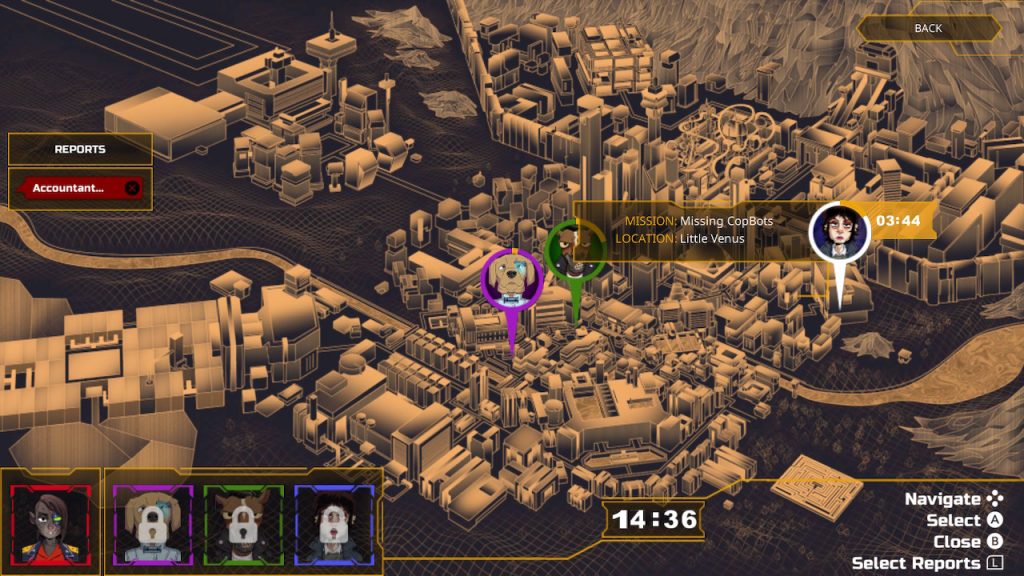
Combine the game’s timer, constantly shifting and changing events, and its ever-unravelling story, and what you’re left with is a very stressful game by design, and one that demands several different playthroughs. Even then, it doesn’t get any less stressful as your determination and your confidence to play around grows and grows.
There is only really one single track in Save Koch: a fluidly moving and shifting piece that’s led by slow and sombre piano chords, some bluesy brass interludes, a few sad strings, and a background of industrial drum loops. In a word, the soundtrack is oppressive. It can get you down after a while, so affecting does it prove to be. The soundtrack might only be this single piece, but it’s one that morphs and shifts. It doesn’t loop and start again based on what happens, but instead it just maintains a constant backdrop to the goings-on of the story.
As mentioned at the start, the game is all text, and the only time it’s voiced is in the awkward introductory trailer, though that voice does prove affective enough and setting up the tone and personality of Jeffrey Koch himself. It also teaches you how to properly pronounce ‘Koch’.
Every other sound in the game is an effect made by the beeps and boops of the tablet as timers run down, new information pops up, a mission succeeds or fails, and the phone rings. These effects are nothing special; they’re serviceable and functional, nothing more.
While there’s little to say in the sound department, the game’s visuals have a lot going on. The stand-out aspect of Save Koch’s visuals are its hand-drawn character designs. Each one is an angular comic book drawing reminiscent of the style of Humberto Ramos (a favourite of mine who has had a stellar few runs on Spider-Man). These character designs are all in a mugshot style, and the betray a lot of personality. Some are more detailed and imaginative than others, with the design of the sentient mould (the most fun and unique character in the game) being a bit of a disappointment.
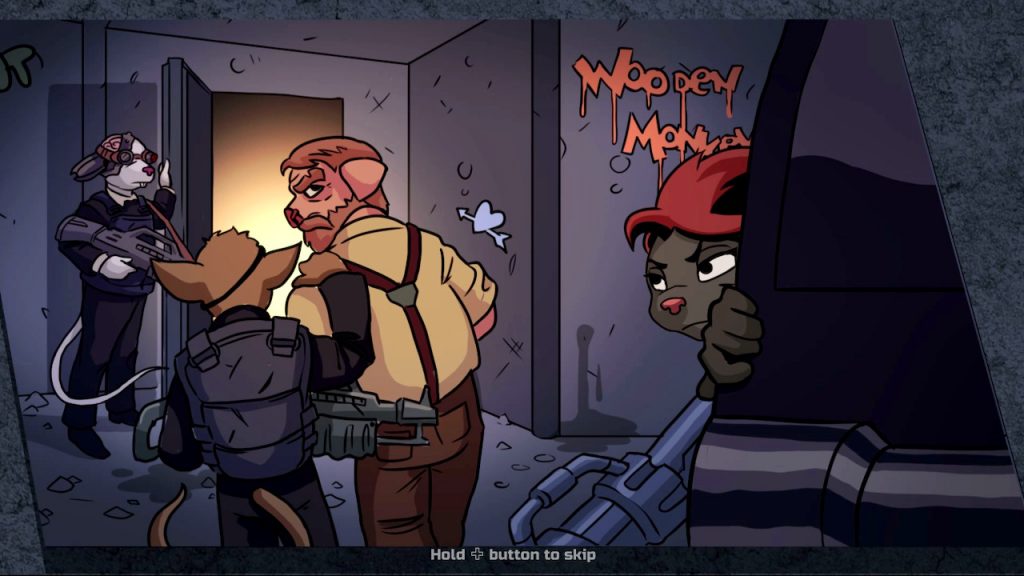
Because of these comic book character designs, the game continues this theme in its small number of cutscenes, which are chopped into panels and transition between days and scenes well enough.
The entire game takes place behind a desk and, as such, a lot of neat touches have been added to make sure you never get bored of being plonked down in the same spot. The biggest touch is the enormous TV screen in front of your desk which constantly updates you with news of the city in real-time. The only issue here is that the game is constantly throwing you missions and phone calls, so you rarely get the chance to watch. But it really adds a lot of visual flair to the game. Then there are details like family photos and the bottle of “Eldritch Tears” on the desk which spells out the game’s biggest narrative and thematic inspiration.
It’s rather difficult to summarize the value of Save Koch, because it mostly comes down to what you’re willing to put into it. That being said, it is up to the game to incentivize players and to give them a good enough reason to put more and more into it.
A single playthrough only takes 90 minutes, but there are so many threads to the game that it can make for dozens of runs if you’re prepared to invest the time. And the lack of an intro means you dive straight back into the action with no time wasted. I remember wanting to restart Persona 5 when I was done with it, only to be put off by the fact that the game has about ten hours of slow, unskippable tutorial. That’s not the case here. You lose, fail, finish, whatever, and then jump straight back into the thick of it.
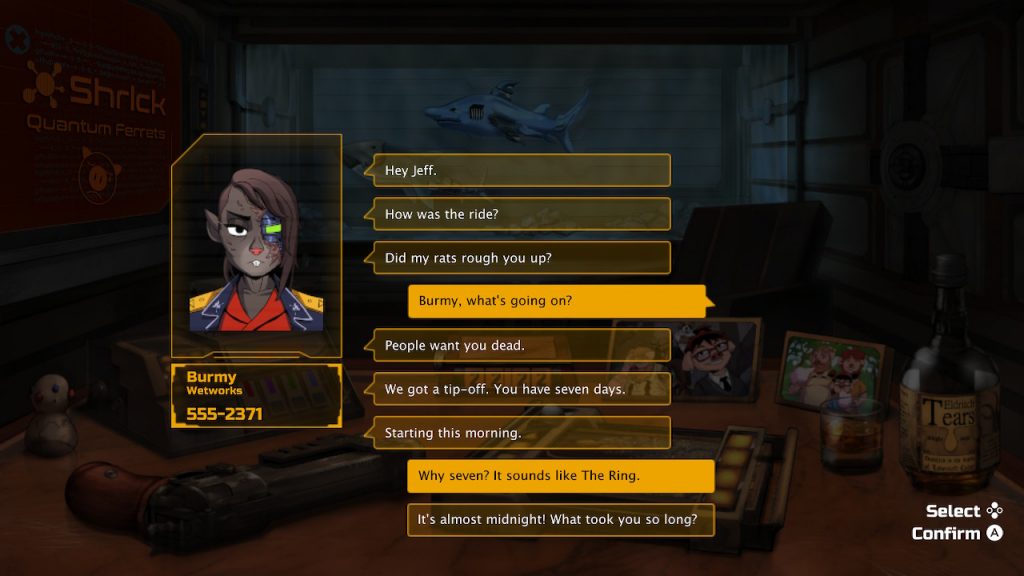
While the game is mechanically limited, it applies enough pressure to your mind and even your reflexes to have you constantly engaged and thinking strategically from beginning to end, over and over again. The visuals and especially the music can get old after a while, but the lack of variety in the gameplay mechanics is honestly not an issue. The game is about narrative threads and choices, and thanks to the way its world is designed to be gently unravelled across multiple playthroughs, boredom is not really an option.
This unravelling is certainly a problem for first-time players, however. A first run of the game can prove so frustrating that it may put many people off from a second run. And the game’s developers should not have to rely on people like me to say, “Give it another go!” or, “Trust me, it gets better! Stick with it!” That’s not my job. And I do wonder if, had I not been playing Save Koch to review it, would I have played through the game multiple times? That’s hard to say.
What I can say is that the first playthrough dumping me in an eldritch world with no explanation and the expectation to care, feel attached, feel motivated, and to figure out the story, characters, and mechanics quickly, well, that was a lot. And while the game is designed with longevity and multiple runs in mind, both mechanically and narratively, it doesn’t provide that initial incentive to keep at it if you don’t enjoy it within the first few minutes. It’s very easy to get frustrated and put off almost immediately.
Save Koch Review provided by Nintendo Link
Developer: Undefined
Release Date: March 6, 2020
Price: $19.99, £17.99, €19,99
Game Size: 1.1 GB
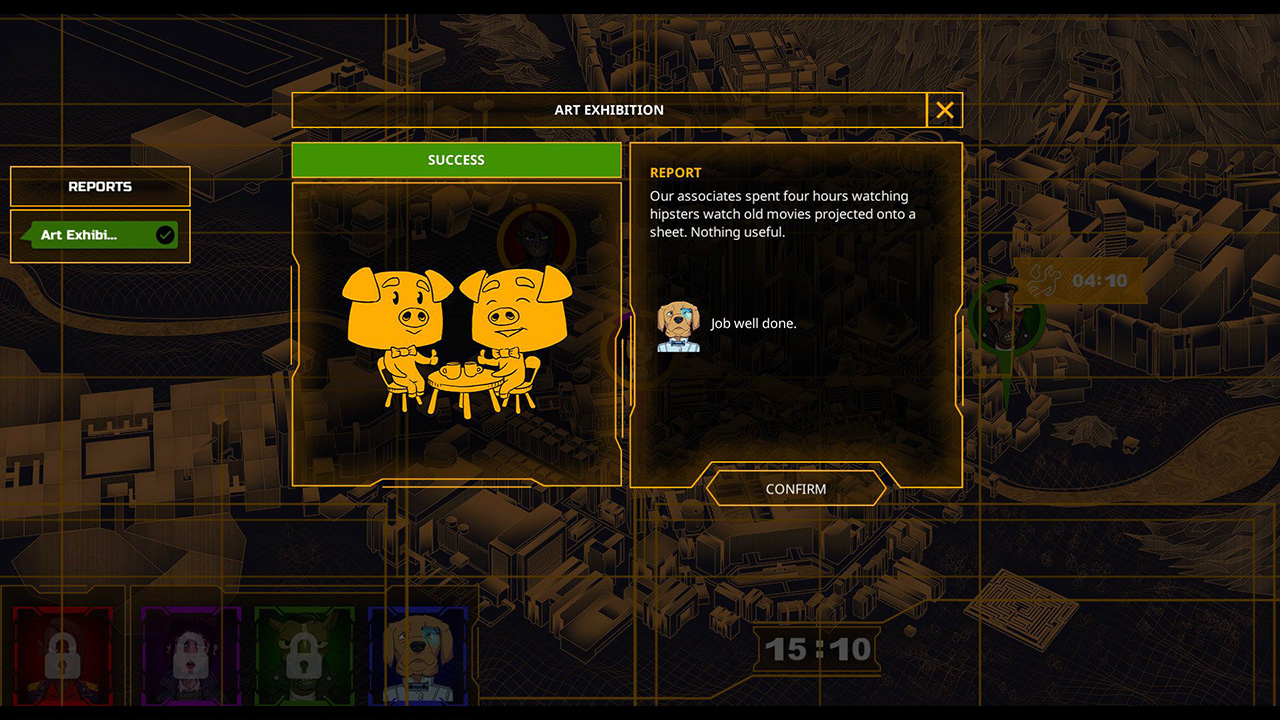
Beautiful comic book aesethic
Layered world and narrative
Dynamic gameplay mechanics
Lack of establishing lore
Confusing first playthrough
Lack of sound design
What's Your Reaction?
Will Heath is a freelance writer and digital nomad from the UK who mostly splits his time between London and Tokyo. He runs the website Books & Bao – a site dedicated to international literature and world travel – and writes about video games for Nintendo Link and Tokyo Weekender.

